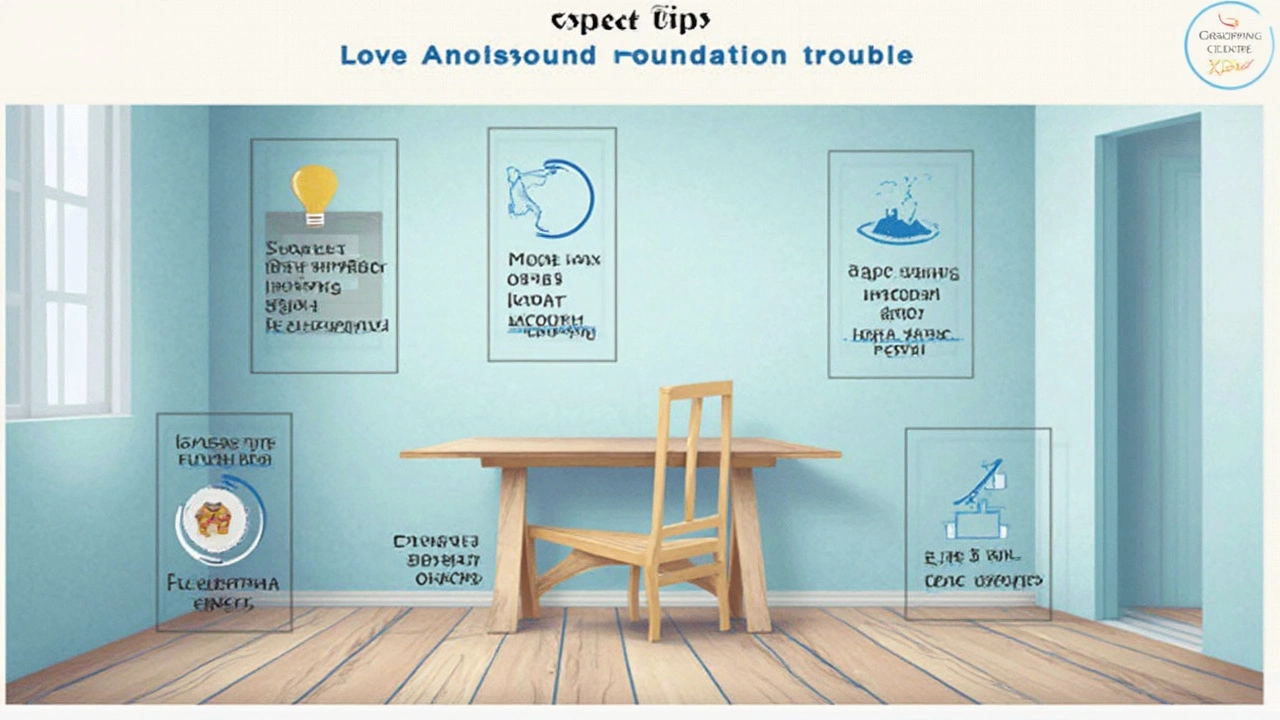Cracks creeping up your living room wall? Foundation problems usually start quietly, and by the time you notice, they're already expensive. Here’s the thing—dry soil is one of the biggest enemies hiding below your feet. When the ground underneath your house shrinks from lack of moisture, your slab or crawlspace can shift, twist, and finally crack.
Does watering your foundation sound strange? It’s actually an old trick in places where soil swells and shrinks with the seasons. It’s not just for farmers. Homeowners in cities like Dallas, Houston, or anywhere with clay-heavy dirt swear by it to save their foundations from costly repairs.
If you ignore your soil, especially during those brutal hot, dry months, you risk gaps forming under your house. This isn’t just theory—I’ve seen it first-hand near my own house when dry soil caused hairline cracks. Since then, I’ve kept a closer eye (and hose) on that ground near the walls. It’s not about drowning your yard, either. There’s a method to the madness. Keep reading if you want to sidestep repairs that can hit your wallet hard.
- Why Foundations Crack: The Real Problem
- How Soil Moisture Affects Your Foundation
- Should You Water the Foundation—and How?
- Common Mistakes and What to Avoid
- Foundation Care Tips for Every Homeowner
Why Foundations Crack: The Real Problem
No one expects cracks to pop up in their home’s foundation, but it happens to tons of us—especially in places with swingy weather or clay-rich soil. So, what's actually going on down there? The problem isn’t just age. It’s all about movement.
Most houses sit on soil that naturally shifts when it gets wet or dry. Clay soil is especially notorious; it swells when soaked and shrinks up like a sponge when parched. This constant expand-and-contract routine messes with the support under your house. When soil pulls away or swells up fast, your foundation loses its even footing, and cracks happen.
Check out this quick soil shrink-swell comparison:
| Soil Type | Shrink-Swell Potential |
|---|---|
| Clay | High |
| Loam | Moderate |
| Sand | Low |
Another big trigger is wild changes in moisture. A long dry spell, followed by a heavy rain, sends the soil on a rollercoaster. Structural engineers have found that up to 60% of home structural issues in the south-central US trace back to this soil movement, not the actual construction quality.
Trees and big shrubs don’t help either. Their roots suck tons of water out, making the ground even thirstier. Plumbing leaks and poor drainage can add hidden water too, making some spots too soggy while others dry out.
It's not just about fixing cracks. If you spot doors sticking or new gaps along your trim, the root cause is likely your soil is misbehaving. Keeping soil moisture consistent is the backbone of foundation watering and saves you from sudden, costly repairs.
How Soil Moisture Affects Your Foundation
The dirt under your house acts like a big sponge. If it gets too dry, it shrinks away from the foundation, leaving gaps for movement. If it gets way too wet, it can swell and push up on the concrete. Both situations spell trouble if you want to avoid foundation cracks and expensive repairs.
In lots of U.S. cities, especially in Texas or the Midwest, soil is high in clay. Clay-heavy dirt is the worst because it acts like a yo-yo—shrinks fast during drought, swells big-time with rain. What happens next? Your house moves, and suddenly you see cracks in drywall, tiles popping, or doors that stick. More than half of American homes are built on clay-rich soil, which means plenty of homes risk these issues without simple care.
If you ever peeked outside after a dry spell, you might notice the gap between your garden and the house. That's a clear sign your soil’s pulling away and your foundation might be at risk. I’ve seen foundation shifts over single summers when the ground went months without water and then, boom, a big downpour hit. That quick change can be brutal for concrete slabs.
Here’s a quick look at soil movement and its impact:
| Soil Moisture Level | Soil Action | Risk to Foundation |
|---|---|---|
| Very Dry | Shrinks, pulls away from foundation | Cracking, settling, movement |
| Very Wet | Swells, pushes against foundation | Heaving, cracking, possible leaks |
| Consistent, Moderate | Stable, supports foundation | Minimal risk |
The best thing you can do is aim for steady moisture around your house. Fluctuations hurt—the ups and downs in water content cause most shifting. Big fact: studies from the American Society of Civil Engineers say more than 60% of foundation problems come from these soil moisture swings.
If your home is in an area with big temperature changes, dry spells, or that sticky clay dirt, keeping an eye on moisture around your foundation makes a real difference. That’s where regular, smart foundation watering comes into play. The process isn’t complicated, but doing it right can literally save your house—no exaggeration.

Should You Water the Foundation—and How?
First off, yes, you probably should water your foundation if you live where soil dries out and cracks during long hot spells. Dry, shrunken soil won't support your house the same way, and that's when you’ll start to see those worrying gaps and cracks. Watering the soil helps keep its moisture level steady, which means the dirt under your house won’t pull away and leave your foundation unsupported.
But there’s a right way to do it. Don’t go overboard and create a swamp. Too much water is just as bad—maybe worse—since it can make the ground swell and push the concrete upwards, causing even more problems.
The key is to keep things as even as possible. Most pros recommend using a simple soaker hose about 12–18 inches away from your home’s foundation, not right up against it. Aim for watering your foundation slowly and consistently, especially during the summer or whenever you see the soil pulling away from the slab. Run the hose for about 15–30 minutes, two or three times a week when it hasn’t rained in a while. Adjust as you go—if the soil is already moist, skip a day.
- Never point sprinklers or hoses right at the foundation wall—that’s a recipe for erosion.
- Avoid watering during heavy rain or after storms since oversaturating clay soil can make it balloon up and put stress on your slab.
- Monitor the soil—if it’s crumbly or showing gaps, that’s a clear sign it’s time to water.
Another tip: Mulch can help, too. Toss a couple inches of mulch around the perimeter to lock in moisture and keep the sun from baking the dirt dry. And remember, foundation watering works best when you make it a habit, not just something you do when things already look bad.
Common Mistakes and What to Avoid
Trying to protect your house by watering the soil isn’t foolproof. People make certain mistakes that can turn a good idea into a big problem. Here’s what trips up most homeowners.
First off, overwatering is a classic error. If you crank up the sprinkler and leave it running every day, you might cause the opposite issue—soggy soil. Too much moisture can make the ground swell, lifting your foundation rather than letting it settle slowly. Swollen soil is just as dangerous as dry dirt if you want to avoid cracks and shifting.
Another common trip-up is watering unevenly. If one part of your foundation gets soaked and another stays bone dry, you encourage movement—sideways, up, or down. Consistency around the whole base of your house is the only way to keep things steady.
Many folks also forget to adjust their schedule when the weather changes. For example, in a rainy stretch, you can scale back or pause. In drought, step it up. Sticking to a rigid routine without watching the weather can do more harm than good.
People often set sprinklers too close to the foundation wall. A good rule is to keep the water about 12–18 inches away. Spraying right up against your house invites water to sneak into your crawl space or basement. That’s a direct invite for water damage and even mold.
- Don’t let landscaping trap water near the foundation. Sloped flowerbeds or mulch piled high can pool water against the wall, leading to leaks.
- Avoid quick, deep watering. Shallow, regular moisture is better so the soil doesn’t swell and shrink too fast.
- Don’t ignore clogged gutters or downspouts. They spill water close to the walls, making things worse.
Here’s a handy table showing the impact of improper watering methods based on recent Texas home surveys:
| Watering Habit | Degree of Foundation Issues Reported (%) |
|---|---|
| Uneven watering | 68 |
| Overwatering | 54 |
| Watering too close | 42 |
| Inconsistent schedule | 60 |
If it sounds a little nit-picky, it’s really no different than mowing your lawn or cleaning your gutters—small things add up. The foundation watering trick works if you avoid these pitfalls and pay attention to what the ground around your house is doing.

Foundation Care Tips for Every Homeowner
If you're serious about protecting your house from cracks and big bills, a few regular habits make all the difference. Nobody wants to pay for a new foundation (trust me, my neighbor learned that the hard way last year). Keep your home solid with these simple but important moves.
- Monitor soil moisture. During dry months, check the dirt around your house for gaps or pulling away from the foundation. If you notice cracks or dry spots, break out the hose. Don't flood the area—just keep the moisture even.
- Use soaker hoses, not sprinklers. Lay a soaker hose 12–18 inches from the foundation and let it run slowly. Once or twice a week is usually good enough during heat waves, but always adjust based on rainfall and temperature.
- Keep landscaping in check. Large trees love to suck up water, and roots can shift the dirt. Try to keep big plants at least five feet away from the house, and avoid piling mulch or flower beds right up against the wall.
- Direct water away. Your gutters and downspouts should send water far from your house—not straight to the edge. This keeps the soil from getting soggy and then drying out, which causes heaving and shrinking.
- Keep an eye on cracks. A hairline crack is normal, but if you see it growing or you can slip a coin inside, it's time to call a pro.
Curious what happens when you mix up your care? Here’s how different maintenance choices affect your odds of running into foundation watering trouble.
| Maintenance Habit | Chance of Foundation Issues (5-Year Window) |
|---|---|
| Leaving soil dry and cracked all summer | 40% |
| Watering foundation in dry months | 10% |
| Downspouts spilling near the slab | 35% |
| Using soaker hoses and proper landscaping | 8% |
Think of foundation care like oil changes for your car: a little effort every season saves you stacks of cash down the line. Build these habits and sleep better knowing your house is standing strong.



